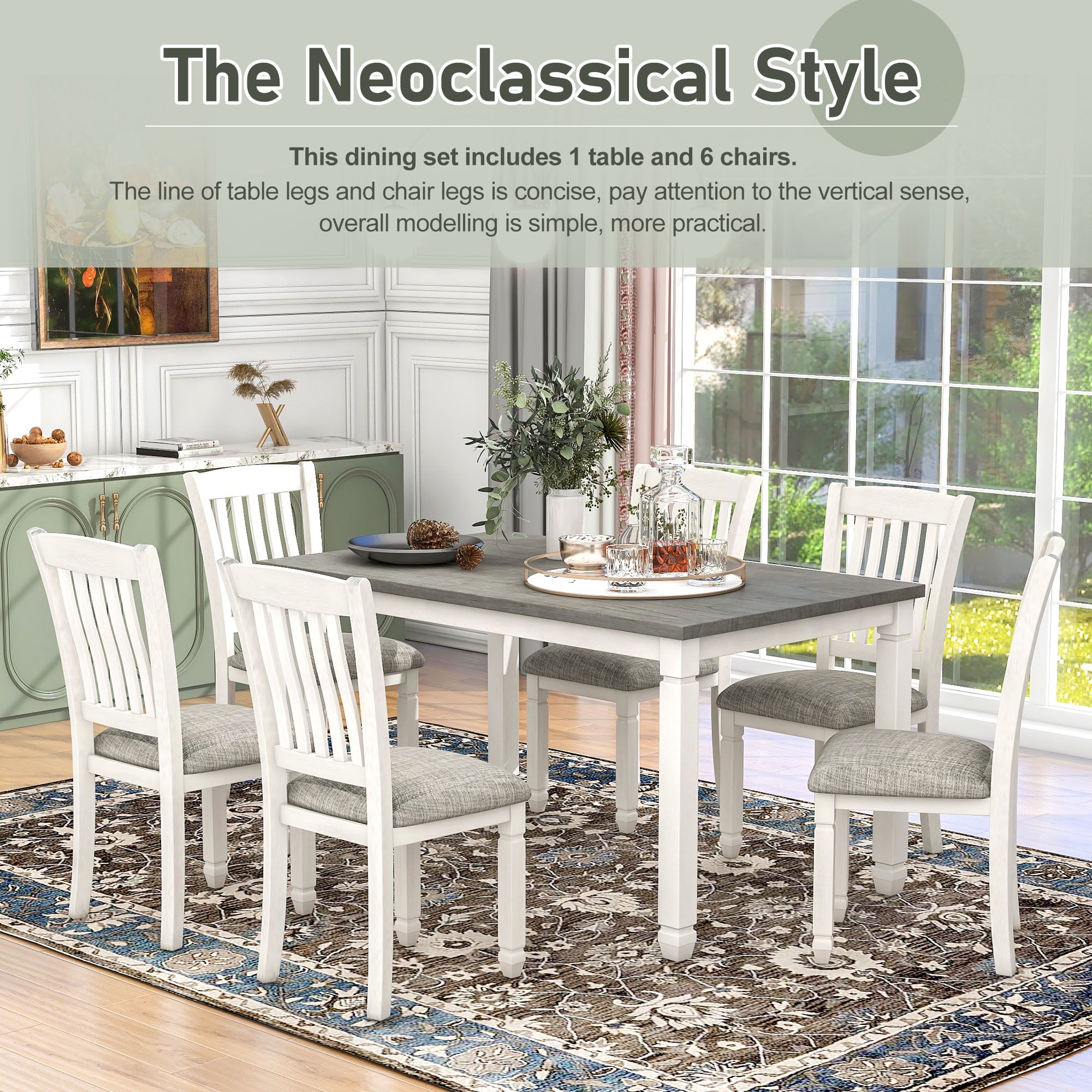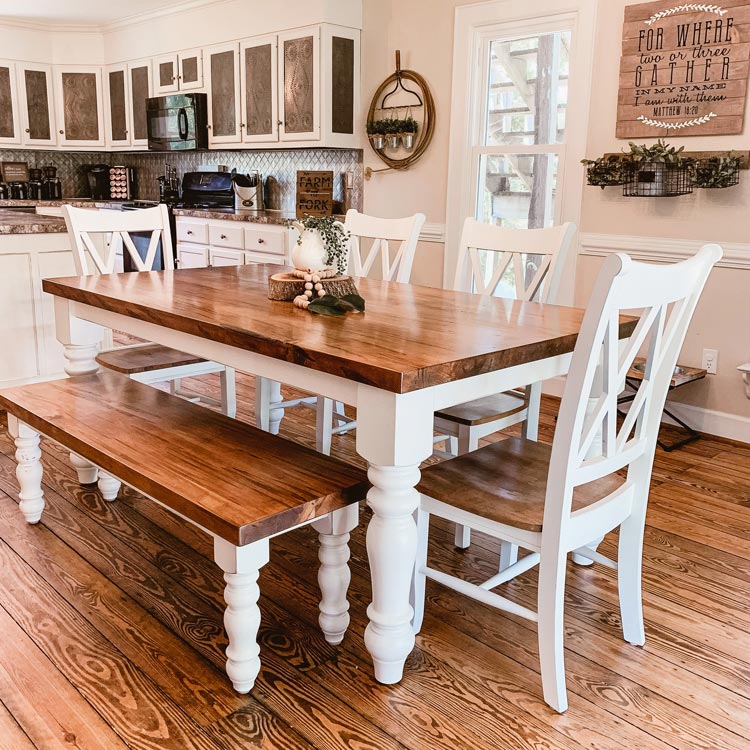Enhance Your Dining Room with Unique and Modern Dining Room Table Legs
Enhance Your Dining Room with Unique and Modern Dining Room Table Legs
Blog Article
From Traditional to Modern: Locate the Suitable Dining-room Table Legs for Your Design
While classic layouts such as cabriole and turned legs evoke a feeling of timeless sophistication, modern styles like barrette and geometric alternatives provide a possibility for striking aesthetic rate of interest. As you take into consideration these elements, the concern stays: just how can you effortlessly incorporate these diverse leg styles to develop an unified eating experience?
Recognizing Table Leg Styles
The range of dining area table leg styles can significantly affect both the aesthetics and capability of the area. Each leg style adds distinct aesthetic aspects and practical functions, dealing with varied style choices and usage needs. Understanding these styles is important for picking the best dining table that aligns with your overall interior decoration vision.
For example, conical legs supply a tidy, classic appearance that can boost an area's elegance, while pedestal bases offer stability and make the most of legroom, making them optimal for smaller rooms. Barrette legs, a hallmark of mid-century contemporary style, present an industrial panache, enabling a ventilated, open feel. Similarly, trestle legs stimulate rustic appeal, supplying robust assistance and a sense of timelessness.
In addition, the option of products plays a considerable role. Wooden legs can bring warmth and appearance, whereas metal choices commonly communicate a smooth, contemporary vibe. Inevitably, recognizing table leg designs is essential for creating a cohesive eating area that shows individual design while making certain functionality and convenience. By thoughtfully taking into consideration these elements, you can boost both the useful and aesthetic appeal of your eating room.
Conventional Table Leg Options
When picking dining-room table legs, traditional options frequently symbolize ageless elegance and craftsmanship. These designs reflect a rich heritage and a dedication to high quality, making them suitable for those who appreciate classic visual appeals.
One of one of the most renowned traditional leg designs is the cabriole leg, characterized by its stylish rounded shape. This layout commonly features attractive makings and is most frequently located in Queen Anne and Chippendale furnishings. Another prominent choice is the turned leg, which flaunts a series of smooth, rounded shapes that provide a classic appearance while maintaining security.
In addition, the straight leg, while easy, uses a sturdy and basic framework that can blend effortlessly with a selection of tabletop styles. For those drawn to ornate outlining, claw-and-ball feet legs evoke a feeling of majesty and can offer as a spectacular centerpiece in any type of dining area.
Finally, pedestal bases, although not purely legs, provide an alternate traditional option that enables for adequate legroom and can be perfectly sculpted. Each of these typical leg designs adds to the total setting of an eating area, weding function with visual appeal.

Modern Table Leg Styles
Modern table leg layouts provide a varied variety of designs that emphasize tidy lines and innovative materials. These layouts often focus on performance while acting as striking prime focus within an eating area. Minimal visual appeals prevail, with legs crafted from products such as metal, glass, and engineered timber, which add to a modern and ventilated feeling.
One preferred layout is the barrette leg, characterized by its slim, tapered structure that provides security without overwhelming the table top (dining room table legs). This design is often discovered in mid-century modern furniture and can effortlessly enhance numerous table shapes. Another trend is making find this use of geometric forms, where legs might handle angular or unbalanced kinds, adding aesthetic rate of interest and a touch of virtuosity

Mixing Designs for Distinct Areas
Commonly, property owners look for to produce special eating rooms that mirror their individual style by mixing different style components. This technique permits for the unification of diverse visual appeals, leading to a harmonious yet distinct setting. For example, combining a rustic wooden table with streamlined, modern metal legs can develop a captivating contrast that raises the space's total allure.
In addition, incorporating vintage table legs with modern tabletops can stimulate a feeling of background while maintaining a modern-day perceptiveness. Such combinations not just showcase private preference yet additionally encourage creativity, allowing homeowners to curate a space that really feels both personal and inviting.
Shade plays an essential function in this mixing procedure; choosing table legs that match or comparison with the existing shade scheme can improve visual interest. Whitewashed legs can soften the boldness of a dark table surface, developing a balanced visual.
Tips for Selecting the Right Legs
Picking the right table legs is vital for accomplishing both capability and aesthetic appeal in your eating area. Begin by taking into consideration the overall design of your room. Typical settings take advantage of legs that feature intricate makings or transformed styles, while contemporary spaces may call for sleek, minimalist designs.
Following, evaluate the height and security of the legs. dining room table legs. Standard dining tables range between 28 to 30 inches in elevation, so make certain the legs match this measurement for convenience. In addition, durable products, such as wood or steel, can boost stability and long life
Review the leg shape too-- choices include right, tapered, or stand styles. Straight legs provide a traditional appearance, while conical legs can add a touch of beauty. Pedestal bases supply sufficient legroom and are optimal for smaller sized areas.
Final Thought
In recap, choosing the ideal dining-room table legs needs mindful factor to consider of both contemporary my response and conventional designs. Typical options such as cabriole and turned legs provide timeless beauty, while modern-day styles like barrette and geometric forms give a contemporary touch. By integrating leg design, elevation, and product with the overall decoration, a cohesive and welcoming environment can be attained. Inevitably, the selected table legs need to show the desired visual, boosting go to this website the eating experience within the room.
The selection of dining space table leg styles can considerably influence both the visual appeals and capability of the room. Eventually, recognizing table leg designs is vital for creating a natural dining location that reflects individual style while making certain practicality and comfort.One of the most legendary standard leg designs is the cabriole leg, defined by its graceful rounded form. Straight legs offer a classic look, while conical legs can add a touch of elegance.In recap, choosing the optimal dining space table legs needs careful consideration of both contemporary and traditional designs.
Report this page